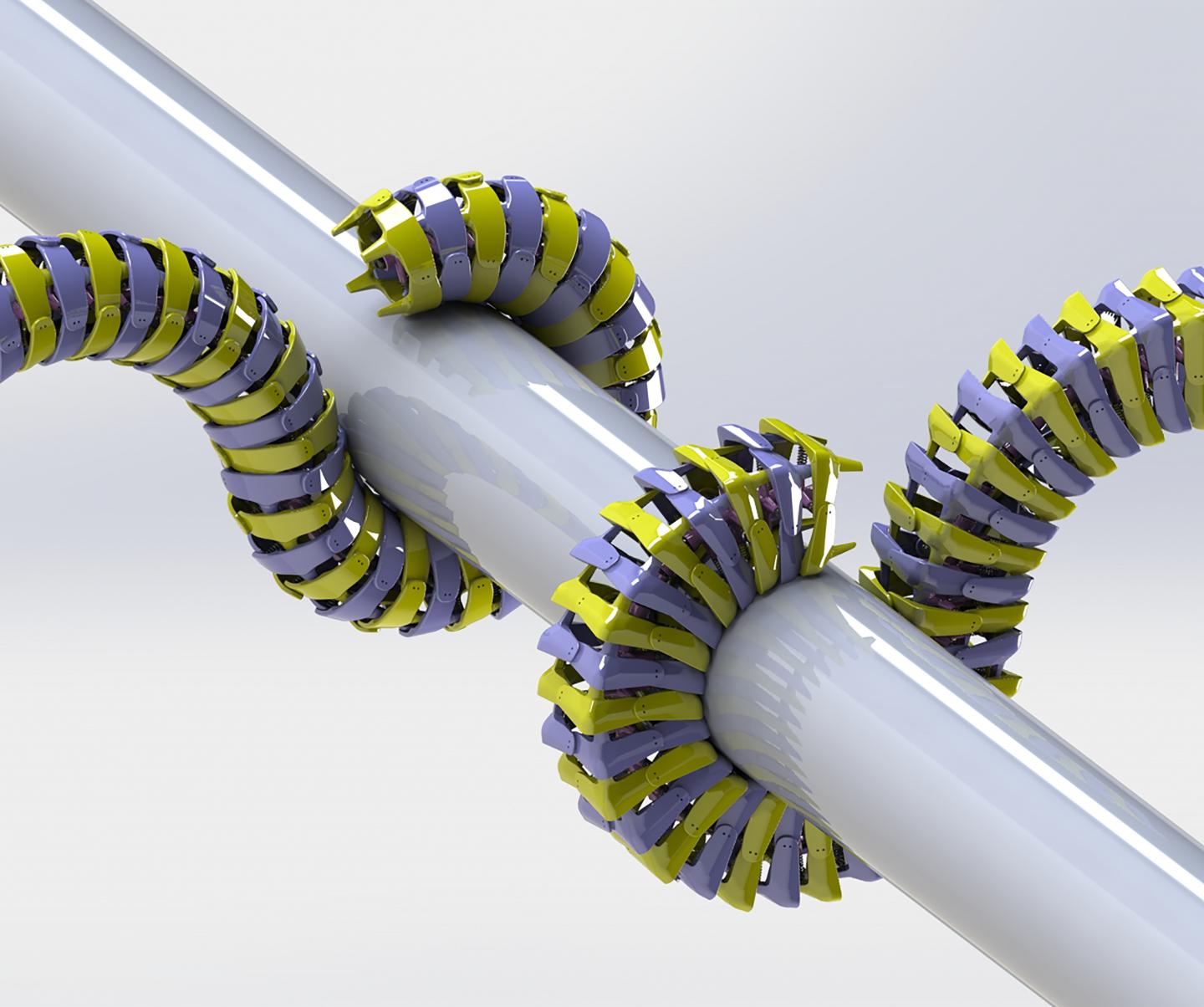Why is the seahorse's tail square? An international team of researchers has found the answer and it could lead to building better robots and medical devices. In a nutshell, a tail made of square, overlapping segments makes for better armor than a cylindrical tail. It's also better at gripping and grasping. Researchers describe their findings in the July 3 issue of Science.
"Almost all animal tails have circular or oval cross-sections--but not the seahorse's. We wondered why," said Michael Porter, an assistant professor in mechanical engineering at Clemson University and the lead investigator on the study, who earned his Ph.D. in materials science and engineering at the University of California, San Diego, in 2014. "We found that the squared-shaped tails are better when both grasping and armor are needed."
Also remarkable, the square plates make the seahorse's tail stiffer, stronger and more resistant to strain at the same time. Usually, strengthening any one of these characteristics will weaken at least one of the others, Porter said. He and colleagues set out to find out why.

Researchers found that the tail's square segments created more contact points with the surface that it is gripping when compared to a tail with round segments. Credit: Michael Porter/Clemson University
They found that square plates move with only one degree of freedom when crushed: they slide. By contrast, circular plates have two degrees of freedom: they slide and they rotate. As a result, the square plates absorb much more energy before permanent failure begins.
To arrive at their findings, researchers used a wide range of techniques, including 3D-printing a simplified model of the seahorse's tail, which they then bent, twisted, compressed and crushed. They also 3D-printed and ran similar experiments on a tail model made of overlapping round segments that they designed and that is not found in nature.
"New technologies, like 3D-printing, allow us to mimic biological designs, but also build hypothetical models of designs not found in nature," said Porter "We can then test them against each other to find inspiration for new engineering applications and also explain why biological systems may have evolved."
The Science study builds on work Porter started at UC San Diego in collaboration with Dominique Adriaens, professor of evolutionary biology at Ghent University and UC San Diego materials science and engineering professors Joanna McKittrick and Marc Meyers. "Michael decided to use engineering and technology to explain biological features," said McKittrick, who was Porter's co-advisor and is a co-author on the paper. You can simplify nature and study it in the lab, added Meyers, also a co-author and Porter co-advisor. "Then you can build new bioinspired structures and devices."
Porter's research group at Clemson is now applying this method to develop new structures and robotic systems that mimic a variety of other natural--and hypothetical--systems, allowing him to translate his research across disciplines: from biology as a source of inspiration for engineering; and from engineering as a tool for the exploration of biology.
Grasping, gripping
When researchers twisted the 3D-printed square seahorse tail model, they found that its plates interfered with one another, limiting its range of movement by about half when compared to the model made of round segments. In addition, after it was twisted, the square model returned to its original shape faster, while expending a minimum amount of energy. Researchers theorize this might protect the tail from damage. By contrast, a tail made from round segments twists easily and requires more energy to return to its original shape. Researchers also found that the tail's square segments created more contact points with the surface that it is gripping when compared to a tail with round segments.
In addition, a seahorse's tail bends in a way that allows it to grasp objects within its line of sight. Study co-author Ross L. Hatton, assistant professor of mechanical engineering at Oregon State University and specialist in robotics, helped Porter develop geometric models describing the tail's mechanics and proving its geometry is optimized precisely for this kind of grasping.
Armor
Researchers also compressed the models made of 3D-printed segments and compared their behavior to 3D-printed solid structures with square and circular cross-sections--but without segments. They found that a seahorse's tail has joints at the exact locations where the solid structures fail when crushed. This allows the structures to absorb more energy on impact. Even more impressive, the square model outperformed the round one in all crushing tests. This is because square segments fail without changing their general shape. By contrast, round segments open up under the applied load, changing their shape from circular to elliptical.
This is important, because water birds are one of the seahorse's main predators and capture their prey with their beaks and crush them in the process.
Applications
Porter is also investigating how devices inspired by the structure of the seahorse's tail could be used in real life. One possibility is to scale up the structure to build a gripping robotic arm that can be used in hostile environments. Another is to scale it down to build a catheter. But the possibilities are many, said study co-author Meyers.
Structure of the seahorse's tail
The seahorse's tail is typically made up of about 36 square-like segments, each composed of four L-shaped corner plates that progressively decrease in size along the length of the tail. The plates are free to glide or pivot. Gliding joints allow the bony plates to slide past one another. Pivoting joints are similar to ball-and-socket joints, with three degrees of rotational freedom. The plates are connected to the vertebrae by thick coThe research was funded by the Air Force Office of Scientific Research, the National Science Foundation, the Belgian Agency for Innovation by Science and Technology, Oregon State University and Clemson University.
Link: http://www.sciencemag.org/lookup/doi/10.1126/science.aaa6683